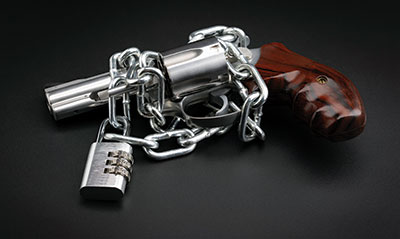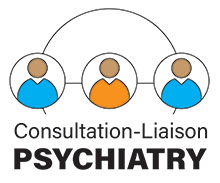Psychiatrists Have Tools to Prevent Gun Violence
Abstract
Educating patients and their families about the responsible storage of firearms and options to limit access to firearms may save lives. This article is part of a series by APA’s Council on Consultation-Liaison Psychiatry.

Gun violence is a leading cause of premature death—and preventable death—in the United States, according to the American Public Health Association. While still a small percentage of total firearm deaths, mass shootings have been increasing in frequency over the last several decades. Mental illness is often blamed for these shootings; however, most mass shootings are not attributable to mental illness. Despite this, there has been an increased focus on the role of psychiatrists in preventing gun violence and mass shootings. There are several ways that psychiatrists can help reduce firearm injuries, including educating patients and their families about safe gun storage and limiting access to firearms when necessary.

Case Example
A 76-year-old man with a reported history of major depressive disorder was admitted to the otolaryngology service after laryngectomy for laryngeal cancer at an academic medical center in California. He was not able to speak due to his recent procedure and communicated by writing on a whiteboard. On the night after his surgery, he became acutely agitated and irritable with the nursing staff, attempted to pull out intravenous lines and remove his dressings, and required frequent redirection. He wrote comments such as “I’m getting my revolver and start shooting.” The primary team contacted the psychiatry consultation-liaison service, requesting assistance in evaluating the patient regarding his risk for dangerousness to others.
On evaluation, he was irritable, impulsive, and restless, repeatedly attempting to leave the hospital room and remove his intravenous lines and dressings, and he would not engage with the evaluating psychiatrist. Given the lack of available information and the patient’s inability to participate in an interview, the differential diagnosis was broad and included delirium, substance withdrawal, and, although less likely, a primary psychotic or mood disorder.
In close collaboration with hospital public safety officers, the psychiatry consultant placed the patient on an emergency 72-hour psychiatric hold for dangerousness to others; this gave police the time and legal grounds to go to his home and secure the firearm. By the next morning, the patient no longer expressed any desire to cause harm, and it was determined that he had been experiencing increased irritability and impulsivity likely due to nicotine withdrawal. His symptoms improved with nicotine replacement therapy. The psychiatric hold was discontinued, and the patient was discharged from the hospital after he was determined to be psychiatrically and medically stable for outpatient treatment. Firearm removal was re-confirmed with his family prior to discharge.
Discussion
This patient was placed on an emergency involuntary psychiatric hold due to concerns about his potential dangerousness to others. Involuntary psychiatric holds can have varying implications for firearm ownership by state, but involuntary commitment to a mental institution, typically after a formal hearing certifying the commitment, results in a federal lifetime firearm ban. In California, under California Welfare and Institutions Section 8102, detaining someone under a 72-hour hold on the basis of dangerousness to self or others requires that any firearms or other deadly weapons are confiscated at the time the hold is placed. If later during the assessment the provider gains information that the person possesses a firearm, it is the responsibility of the provider to follow up with law enforcement to relay this information.
Twenty-one states have some variant of an extreme risk protection order (ERPO) law, which allows an individual to petition a court to remove a firearm from those deemed to be a danger to themselves or others. Who is recognized as a petitioner varies by state but can include law enforcement, family members, educators, roommates, and medical professionals. Furthermore, the federal Bipartisan Safer Communities Act includes funding to incentivize additional states to adopt ERPOs. Despite the existence of these laws in many states for several years, they are often unheard of or underused, so it may be beneficial for psychiatrists to educate patients and families about ERPOs, particularly in states where family members are able to initiate such petitions.
Psychiatrists should be aware of the various ways they can work with patients to minimize the risk of gun violence. As part of any initial evaluation and/or suicide risk assessment, psychiatrists should inquire about access to firearms and be prepared to discuss intervention options to reduce access to such lethal means. While involuntary psychiatric holds and ERPOs typically result in involuntary firearm removal, when possible, voluntary options for firearm storage should be considered to preserve autonomy. At minimum, psychiatrists should educate patients on safe gun storage practices including storing firearms in a locked storage device, unloaded, and separately from ammunition.
Off-site storage (that is, outside the home) is also an option. Several states—Colorado, Maryland, Mississippi, New Jersey, New York, Washington, and Wisconsin—have developed online gun storage maps that list local gun shops and law enforcement agencies that offer temporary, voluntary gun storage on a case-by-case basis. Many local law enforcement agencies and gun shops may be willing to offer gun storage; however, psychiatrists should advise patients who are willing to put their firearms in storage to research relevant firearm transfer laws in their state.
Some states have or are considering establishing voluntary do-not-sell lists, where individuals who recognize they are at increased risk of self-harm or violence can voluntarily place themselves on a list that would ban them from legally purchasing a firearm henceforth.
Clinical encounters provide an excellent opportunity to educate patients and their families on best practices for reducing the risk of gun violence and limiting access to firearms. Doing so may save lives. ■




